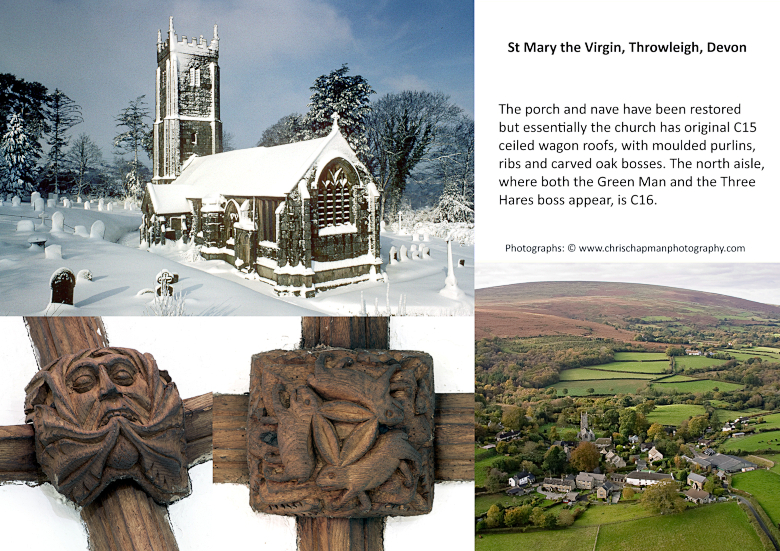|
What Does the Symbol Mean?

Medieval roof bosses, St Mary the Virgin, Throwleigh, Devon.
The three hares motif was clearly revered in all the different contexts in which it is found, but, as yet, we have not come across a contemporary written record of its meaning. It may be expected that the motif would have had different meanings in different cultures but, as an archetype, perhaps there was an element of meaning common to all.
The hare is strongly represented in world mythology and from ancient times has had divine associations. Its elusiveness and unusual behaviour, particularly at night, have reinforced its reputation as a magical creature. The hare was believed to have mystical links to the female cycle and to the moon which governed it.
The theory of the Ancients that the hare was hermaphroditic and could procreate without a mate led to the belief that it could give birth to young without loss of virginity. In Christian contexts, the three hares may be associated with the Virgin Mary in her role in the redemption of mankind. This might explain why a three hares boss is often juxtaposed in western European churches with a boss of the Green Man, perhaps a representation of sinful humanity.
There is no evidence to support any link between the three hares motif and the tinners of Dartmoor. Its occasional description as the 'Hunt of Venus' seems to arise from a misunderstanding of an alchemical illustration published in a book by Basil Valentine c.1600 CE. Linking the motif with the Christian Trinity appears to be an association made long after the image was originally worked.
|